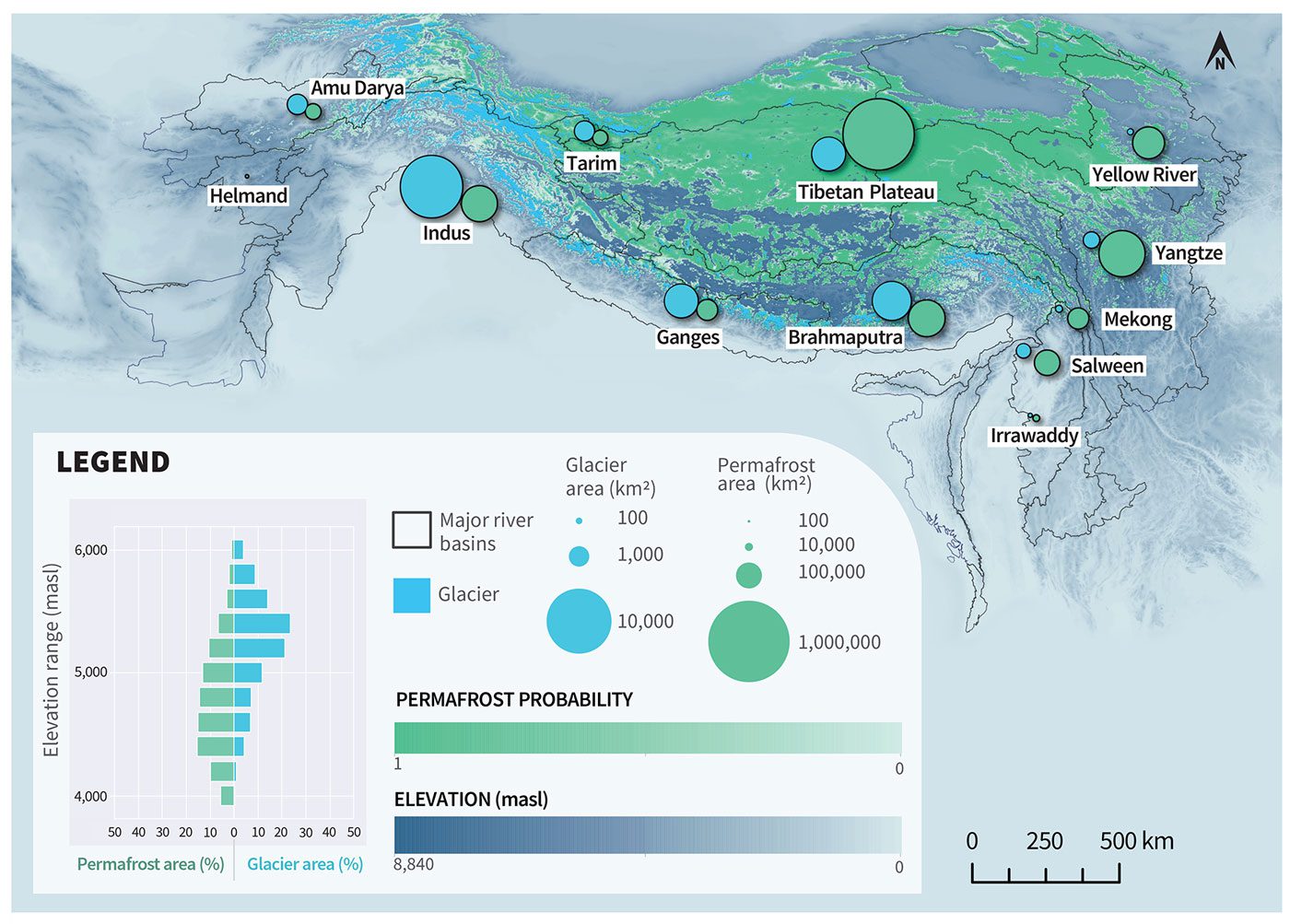Himalayan Glaciers are Dissapearing Fast
A new report finds that glaciers could lose up to 80 per cent of their current volume by the end of the century

A new study from the the International Centre for Integrated Mountain Development (ICIMOD) says that the changes to the glaciers, snow and permafrost of the Hindu Kush Himalaya driven by global warming are “unprecedented and largely irreversible.” A press release gives a brief look at the findings.
Almost two billion people in Southeast Asia — including India, Nepal, and Pakistan — are expected to face water and food crisis as a result of the nearby mountains losing up to two-thirds of their ice by 2100. The study, called Water, Ice, Society, and Ecosystems in the Hindu Kush Himalaya finds that glaciers in the area could lose up to 80 per cent of their current volume by the end of the century.
Snow cover is projected to fall by up to a quarter under high emissions scenarios – drastically reducing freshwater for major rivers such as the Amu Darya, where it contributes up to 74 per cent of river flow, the Indus (40 per cent) and Helmand (77 per cent). The extent of frozen ground is decreasing, which will lead to more landslides and problems for infrastructure at high elevation.
Glacial melting would not only affect access to drinking water, but also reduce the water available for agriculture and hydroelectricity. “Himalaya, Karakoram, and Hindu Kush mountain ranges of South Asia, which contain almost 55,000 glaciers, store more freshwater than anywhere but the North and South Poles,” the report notes, adding that these glaciers “help to moderate flows in the region’s major rivers by providing a source of meltwater in hot, dry years and storing water during colder, wetter years.”

The report’s publication comes after cryosphere scientists at the Bonn Climate Change Conference sounded the alarm at the speed and scale of ice-melt worldwide, which is far outpacing worst-case scenario projections from the IPCC; with a new paper showing Arctic waters could lose all their summer-end sea ice as early as 2030.
Izabella Koziell, ICIMOD’s deputy director general, said, “Climate scientists are reeling from observations in the Arctic and the anomalies we are seeing elsewhere in the cryosphere. The glaciers of the Hindu Kush Himalaya are a major component of the Earth system. With two billion people in Asia reliant on the water that glaciers and snow here hold, the consequences of losing this cryosphere are too vast to contemplate. We need leaders to act now to prevent catastrophe. There is still time to save this critical region, but only if fast and deep emissions cuts start now. Every increment of a degree of warming matters to glaciers here and to the hundreds of millions of people that depend on them. As this study shows, alongside urgent mitigation action, we need adaptation funds and programmes and ecosystem restoration to be rapidly scaled up, and the mobilisation of finance for losses and damages.”
Experts worry that countries may not be equipped to deal with what’s coming. “We are on an alarming path which may result in deeper inequality and wider gap between the haves and have-nots who will bear the brunt of this climate emergency,” said Kanni Wignaraja, United Nations Development Program’s regional director for Asia-Pacific.
Key Findings
. For global warming between 1.5°C to 2°C, by 2100 glaciers are set to lose 30%–50% of their volume compared with 2015.
. For 3°C, between 55 and 75% will be gone.
. For 4°C, between 70 and 80% will disappear.
. Even in the larger glaciers of West Kunlun and Karakoram the remaining glacier area will be half what it is now.
. There has been significant acceleration in glacier mass loss: from –0.17 m w.e. per year from 2000–2009 to –0.28 m w.e. per year from 2010–2019 (an increase of 65%).
. The HKH has seen the mean temperature rise of +0.28°C per decade between 1951 and 2020. The Tibetan Plateau, Amu Darya, and Brahmaputra basins and headwaters of the Mekong and Yangtze basins have had a temperature increase of up to +0.66°C per decade in places.
. Southeast Tibet and Nyainqêntanglha regions show glacier mass loss of –0.78 ± 0.10 m w.e. per year for 2010–2019.
. Snow cover extent will fall by between 1% and 26% for an average temperature rise between 1.1°C and 4°C.
. Episodes of heavy snowfall are already increasing and predicted to become more frequent and intense; however the contribution of snowmelt to streamflow is expected to decrease under all climate scenarios.
“Due to the climate change – the snow and glaciers in Himalaya are decreasing. It’s all kind of foggy and black stones. We can’t see white anymore.” ~ Gyalbu Tamang


